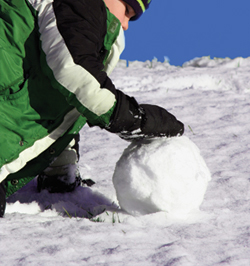Preparing transit for winter conditions
Preparing transit for winter conditions

We’ve had a mild Fall in Metro Vancouver and so far the Winter has been the same. However, according to Environment Canada, as of Friday, November 29, Monday could see rain and flurries and Tuesday could bring temperatures as low as minus six.
In anticipation of these adverse weather conditions, TransLink and its operating companies have plans to maintain service as best as possible for the residents of Metro Vancouver.
Employees will be working to maintain expeditious service wherever possible – snow or shine.
As everyone knows, despite our best efforts snowy weather in Metro Vancouver can create traffic snarls resulting in delays that could spread across the region.
Here are just a few of the efforts we’re taking to help people get to where they are going:
Buses
- Switching out articulated buses for traditional buses. Although articulated buses are great for turning and maneuvering throughout our streets in Metro Vancouver and allow for quick movement of large numbers of passengers, when traveling up hills or on streets that have poor conditions, the back havles are heavy which can create some traction problems. Potential Jack knifing may occur.
- In the evening, three Trolley deicer trucks will spray the entire trolley overhead system if there is a forecast risk of frost or ice.
SkyTrain
- The power rail is de-iced in the winter as well as the collector shoes on the trains. If it snows overnight, Skytrain will run trains throughout the night to keep tracks clear
- De-icing stations will be set up in covered areas and tunnels to prevent ice and snow compacts on the trains. Measures are also taken to make sure switches are protected from freezing
- Staff will be monitoring the guideway for any large snow fall or drop-offs from the Skytrain cars in order to keep the tracks clear.
SkyTrain (Canada Line)
- Winter weather forecast monitoring means more staff can be quickly deployed and more trains can be added to service so riders can get on their way.
- Anti-icing and sanding measures are used to ensure the power rail and tracks are clears of ice. In fact, three vehicles have modifications to provide ice-slicing, de-icing and sanding. And there are special trains that can keep running on the system which further prevents ice-build up.
- New breaking modes for train cars – kind of like ABS on vehicles – to provide traction.
What should customers consider when challenging weather hits the transit system?:
- Riders need to ensure that they give themselves extra time when heading out on the transit system when weather is nasty. Adverse weather means the entire transit system will be much slower as staff will use extra caution.
- Buses endure the same road conditions as other vehicles. As a result, they too are not immune to the accompanying perils caused by bad weather.
- Please be patient with our Operators: they are trying hard to provide efficient and timely service. Schedules will be affected when it snows despite our best efforts.
- TransLink’s operating companies work closely with each municipality and city to help ensure streets or areas are addressed with snow clearing, salting or sanding.
- We live in a region with several micro climates which makes it difficult to clear all areas simultaneously. It is possible that some bus routes will have gaps in service – but it could also mean that some areas are aokay.
Together we can help each other get ready for this possible winter wallop! And if you need help navigating your winter commute, remember our Customer Information team is at the ready through @translink and (604) 953-3333. Sign up for transit alerts, plan ahead with m.translink.ca and Trip Planner and give yourself extra time on your commute.






Forget Monday…. TWN reports a bigger threat towards Friday….
http://www.theweathernetwork.com/weather/canada/british-columbia/vancouver
Are winter tires used on CMBC buses, especially those out of the Port Coquitlam and North Vancouver depots?
What about buses venturing north of Horseshoe Bay? They are required by law to be equipped with winter tires or to carry chains. Are they?
ICBC has stated that it will shift liability in an accident if one or more vehicles involved does not have any equipped. Is TransLink aware of this?
@ Translink
How do you run trains throughout the night?
I think if nothing else during the winter the night buses should run until start of service, especially the N9 as there are absolutely no alternatives in Burnaby if you need to get somewhere before the first train on the weekend. At least with the Expo Line you have the 19 and 106 providing service outside of normal hours, and the N10 runs all night. Why not the N9? Doesn’t even need to be the whole route for all night, could just do Commercial to Coquitlam or even Lougheed.